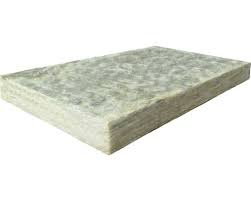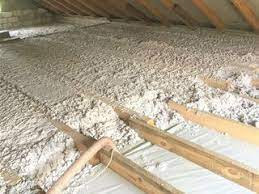Which Thermal Insulations Is the Best to Lower the Energy Costs
There are many different types of thermal insulation materials available on the market, each with its own set of benefits and drawbacks. In order to find the best thermal insulation for your home or office, you will need to consider your specific needs and preferences.
Which Thermal Insulations Is the Best to Lower the Energy Costs
One of the most common types of thermal insulation materials is fiberglass mineral wool. Fibreglass is a very effective thermal insulation material, but it is also relatively expensive. It is also not the most environmentally friendly insulation material, as it can release harmful chemicals when it is burned. Fibreglass wool is an insulating material made of fiberglass that is arranged using a binder in a wool-like texture. This process captures many small air pockets that result in thermal insulation properties.
Uses:
Fibreglass wool is a thermal insulator made by joining a flexible binder that traps air inside, resulting in a low density that can be modified by compression.
Can be used to insulate flat surfaces, such as ceiling tiles, curtain walls, pipe insulation, and sound insulation.
Another common type of thermal insulation is basalt mineral wool. Basalt mineral wool is an inorganic product, obtained by fibrillation by centrifugation of basalt melt. There are different varieties, differentiated by shape and density. Let's first look at the term basalt: Basalt is a volcanic rock, composed of minerals rich in magnesium and iron. This type of cotton wool is used in construction and paving. Basalt mineral wool products are excellent thermal insulation/sound insulation (very good soundproof).
For houses, basalt wool is used to insulate floors, attic roofs, terraces, and exterior and interior walls.
Properties of basalt mineral wool:
- does not maintain fire;
- It is water-repellent. It does not absorb water and does not react chemically with it.
Thermal insulation with polystyrene is another way to lower energy costs.
Probably the cheapest material for thermal insulation, polystyrene is a material with an average thermal performance, similar to basalt wool.
Generally used for exterior thermal insulation, it can be easily used for interior applications such as roofing or flooring. Polystyrene is manufactured in two categories, expanded polystyrene (EPS) and extruded (XPS), the differences between the two types are density and mechanical strength. In general, expanded polystyrene is used to insulate the attic, being cheaper and with good thermal efficiency.
My recommendation is to apply at least 10cm of expanded polystyrene for quality thermal insulation.
Let's talk about expanded polystyrene (EPS)
Although it has low permeability, expanded polystyrene allows water vapor, accumulated in rooms (especially in winter), to escape into the atmosphere. The risk of this water vapor condensing inside the walls is small.
It has thermal stability, keeping its dimensions (volume), when the outside temperatures are high, during the summer. This is in contrast to extruded polystyrene which is affected by excessive heat and ultraviolet rays which cause dimensional deformation (swelling).
It does not lose its thermal insulation properties in environments with high humidity, for example in foggy weather conditions. In other words, it does not absorb water vapor from the atmosphere, which would have increased the thermal conductivity.
Extruded polystyrene is a rigid, light, and flexible foam that provides quality insulation with good water resistance.
It is used for the thermal insulation of the house, including the insulation of the foundation, floors, terrace, basement walls, or balconies;
It can also be used for the thermal insulation of the roof, it can be positioned either in the upper part of the roof, on flat roofs, or as internal insulation under the roof structure. It is durable and resilient, has excellent thermal performance (low energy consumption), easy to handle, cut and install, does not crumble, is not attacked by mold, high compressive strength (recommended for insulation under tiles or various types of roofs), and low moisture absorption.
Thermal insulation with cellulose
Cellulose is a material recently used in thermal insulation, especially for the thermal insulation of the attic. Being a material composed of 75% recycled paper, it is the solution for those who want ecological insulation.
As an application, cellulose is very similar to polyurethane foam insulation, the application being mechanized. This means that you will need to hire a team that specializes in such work to get the job done. Cellulose fills all the spaces and cracks, perfectly seals the area, and makes the roof insulation watertight.
Cellulose has the lowest thermal conductivity coefficient of all materials presented in our list, it is thus the least efficient insulating material in our list.
Thus, considering the low thermal efficiency, but also the advantage of perfect sealing, we recommend you to apply at least 15-20cm of cellulose for good thermal insulation. Like basalt mineral wool, cellulose is a fireproof material.
Main advantage - It is an ecological material with stable thermal behavior over time.
The main disadvantage - Very high weight. To insulate a 200sqm attic using 20cm cellulose with a density of 50kg / m3, the applied cellulose will weigh around 2000kg. Taking into account the snow deposited on the roof in winter, the loads on the roof structure will be very high.
The last type of thermal insulation we are talking about is polyurethane foam
Polyurethane foam is by far the most effective material you can use to insulate the attic, so it is at least 50% more efficient than the first competitor and up to 3 times more efficient than basalt wool. the application is done by spraying, continuously and very quickly, with a 100sqm attic being isolated in 2-3 hours.
The foam thus penetrates the smallest cracks, where it "swells", thus perfectly sealing the entire roof. The thermal bridges are thus non-existent and the heat loss through the exchange of air with the outside is completely eliminated.
Once applied, the foam protects the wood from pests and moisture, keeping it intact for at least 50 years, while the foam is guaranteed. The durability of the thermal insulation is thus guaranteed.
Another benefit of thermal insulation with polyurethane foam is that you will never have problems with condensation again. This is the only material that completely protects against condensation and mold even without an anti-condensation film applied. Moreover, the foam itself acts as a vapor diffusion barrier.
Like cellulose and quality basalt wool, polyurethane foam does not burn. It has self-extinguishing substances in the composition and thus meets the highest standards in reaction to fire.
Thus, considering the superior thermal efficiency but also the advantage of perfect sealing, we recommend you apply 10cm of polyurethane foam to obtain quality thermal insulation.
But you have to take into account the thermal efficiency of the material, the performance over time, and of course the costs.
Also, if you want to do the thermal insulation yourself, you can choose materials that are easy to install, such as mineral wool or polystyrene. For others such as polyurethane foam or cellulose, you need a specialized team.
All insulating materials are affected to a lesser or greater extent by water.
Polyurethane foam, for example, is extremely resistant to moisture, while thermal insulation with basalt wool will be completely compromised if it comes in contact with water.
For example, if we use mineral wool to insulate a well-heated attic in winter and the installation is not the happiest, we will have the perfect environment for condensation.
There is no standard formula for choosing the right material for attic insulation, but I recommend that each part of the house be thermally insulated with the material that is the most efficient and fits best.
So,
1. For the exterior walls of the house the most suitable and efficient material is expanded polystyrene with a minimum thickness of 10 cm or basalt mineral wool, with the same thickness.
2. For floors, ceilings, and foundations, thermal insulation with extruded polystyrene with a minimum thickness between 5 and 10 cm is recommended.
3. For interior walls, made of plasterboard, for lofts with low humidity, fiberglass mineral wool with a thickness between 5 and 10 cm is recommended.
4. For lofts with high humidity and inaccessible spaces, polyurethane foam with a thickness of 10 cm is recommended.
5. For lofts with high humidity and inaccessible spaces, thermal insulation with cellulose with a thickness between 15 and 20 cm is recommended if the resistance structure can support the weight.
Each thermal insulation material is intended to be used where it fits best and its efficiency is maximum, but if the budget is limited, then we adapt and use the materials we can afford.
If you have any questions or would like to help with advice, feel free to leave a comment and I will answer as soon as I can. Thanks!
.webp)







Comments
Post a Comment